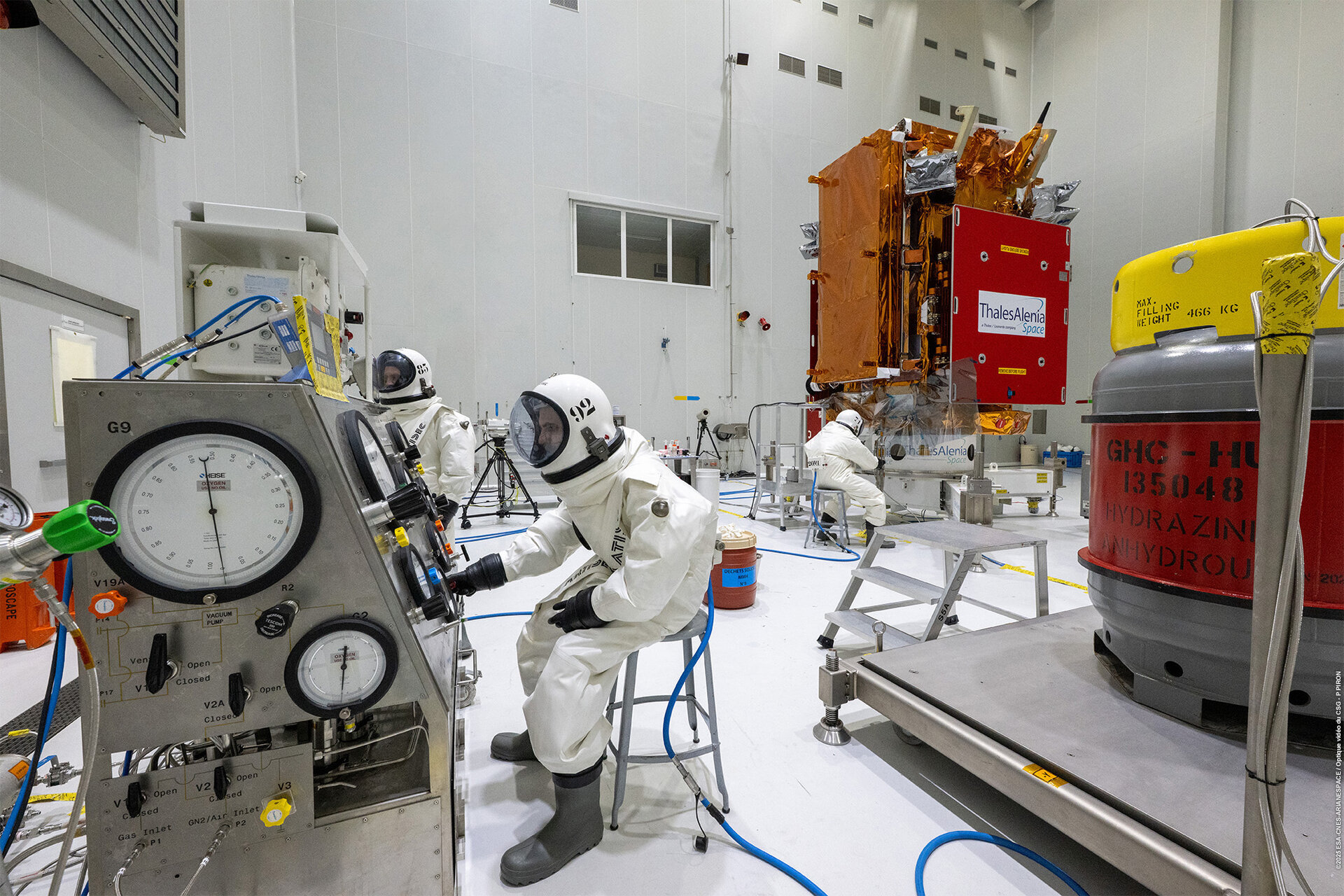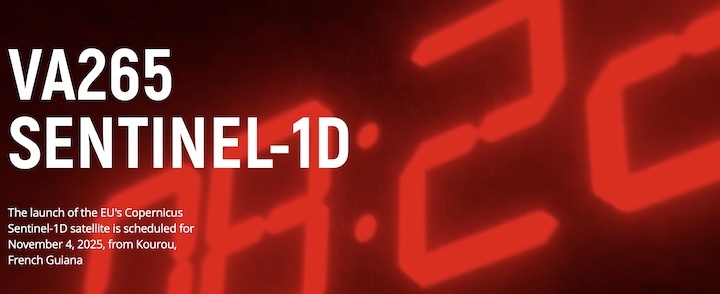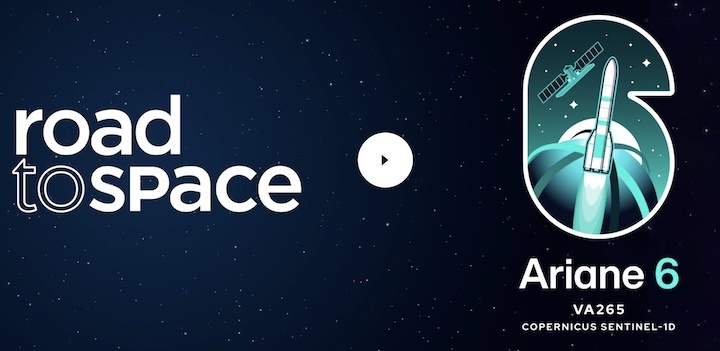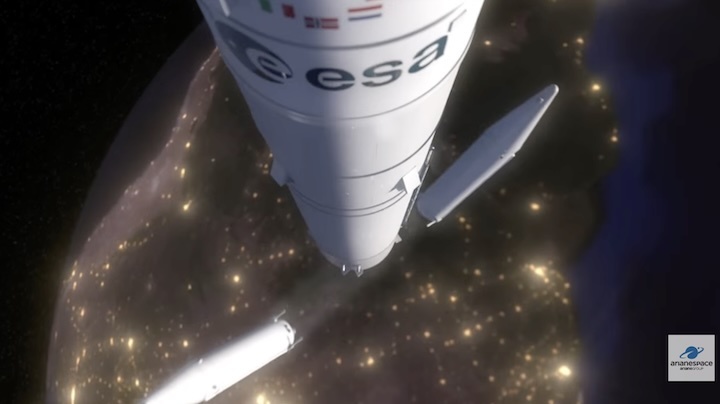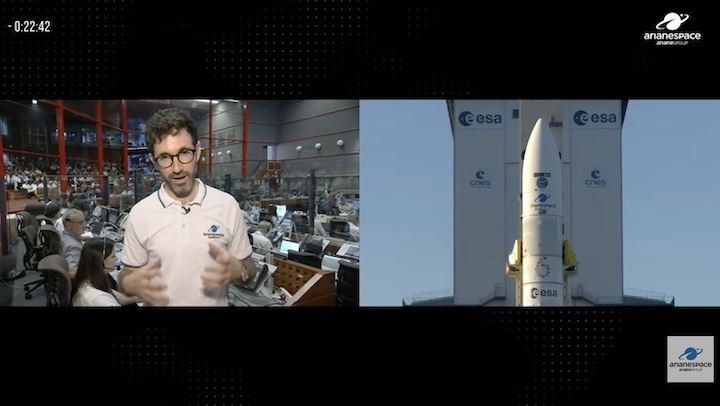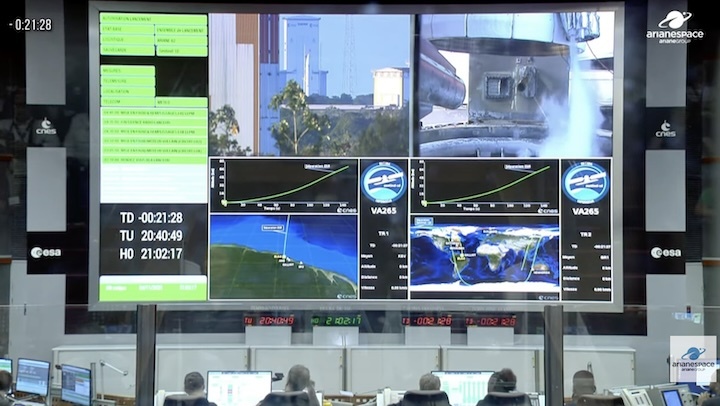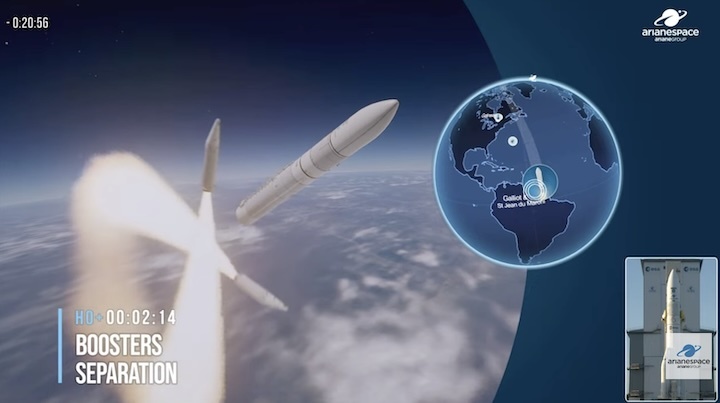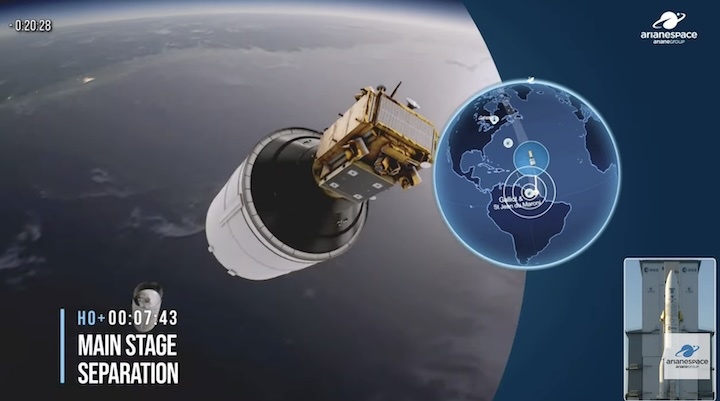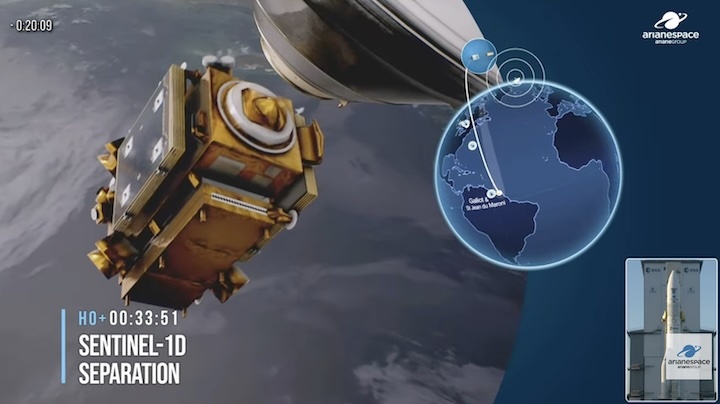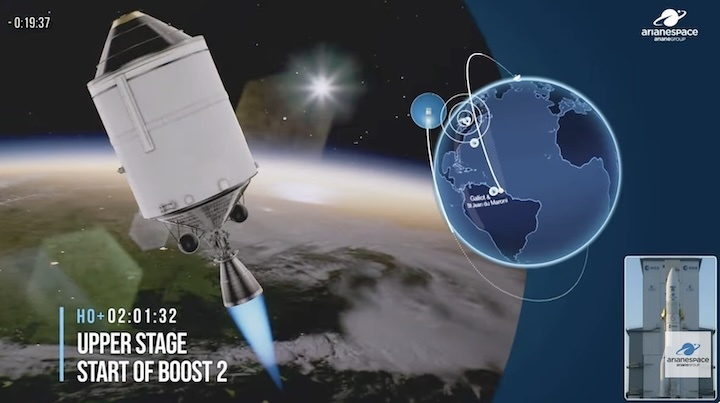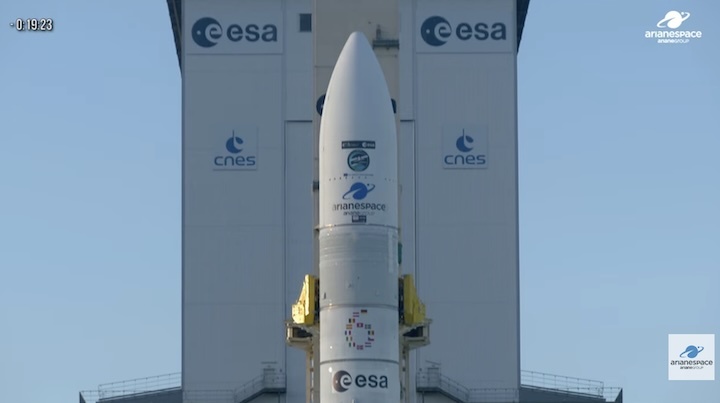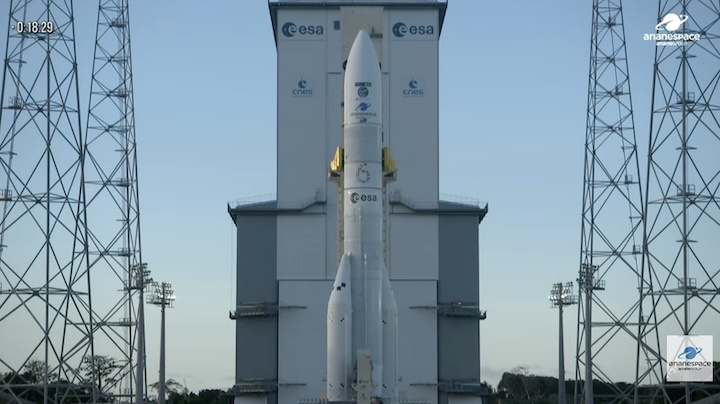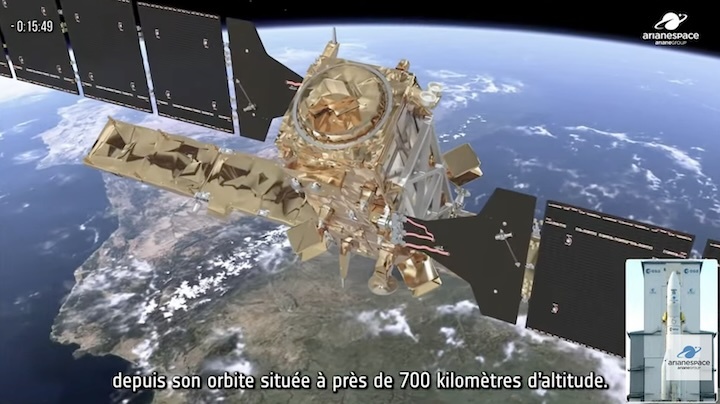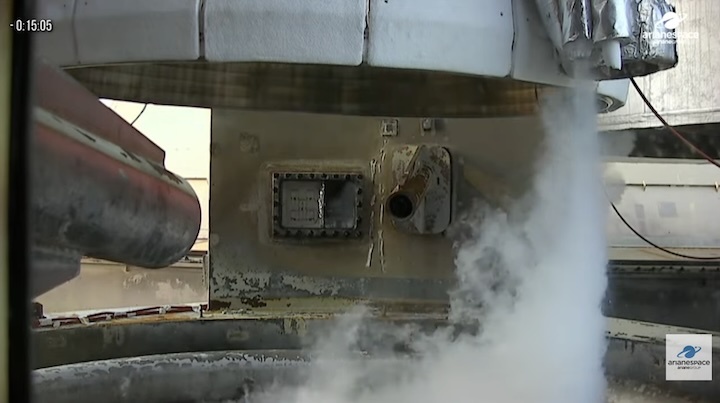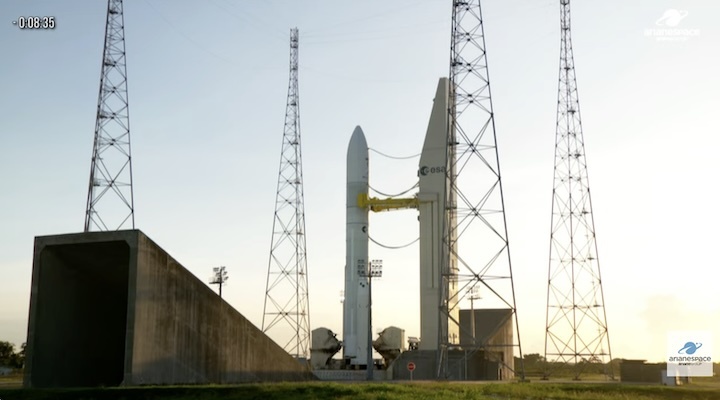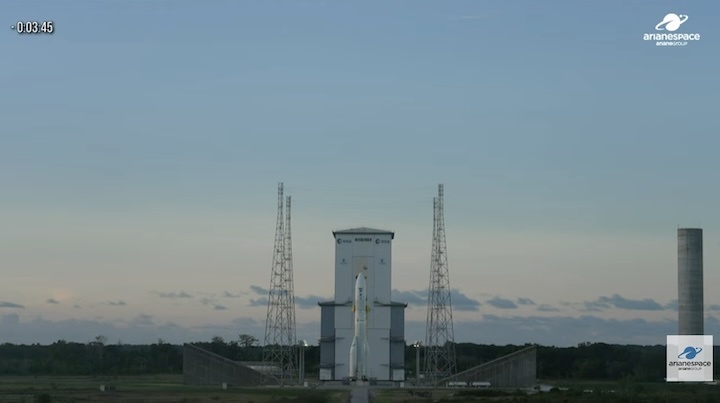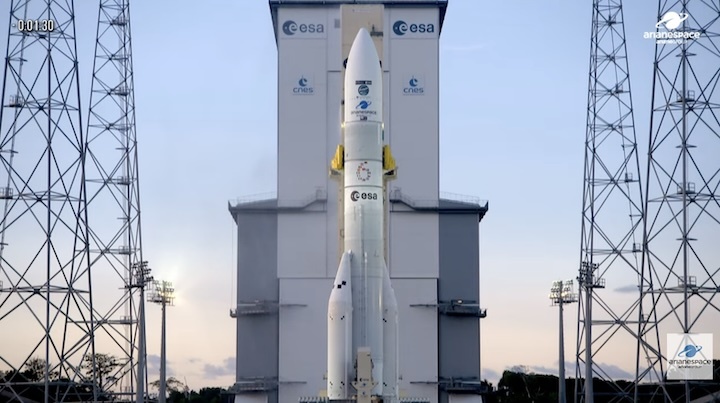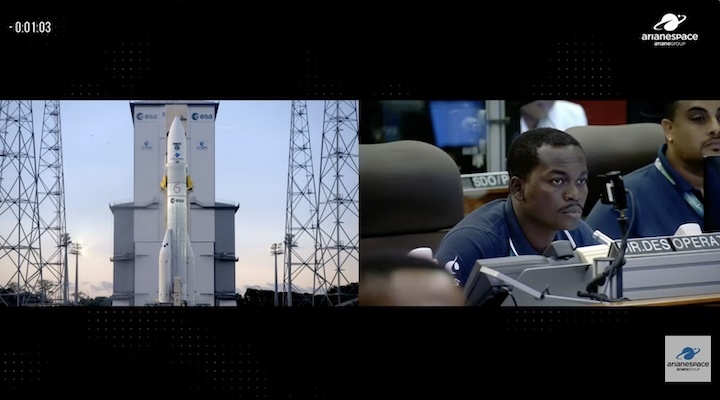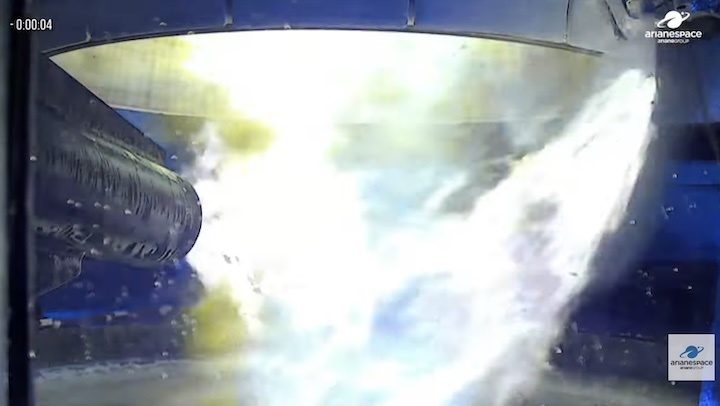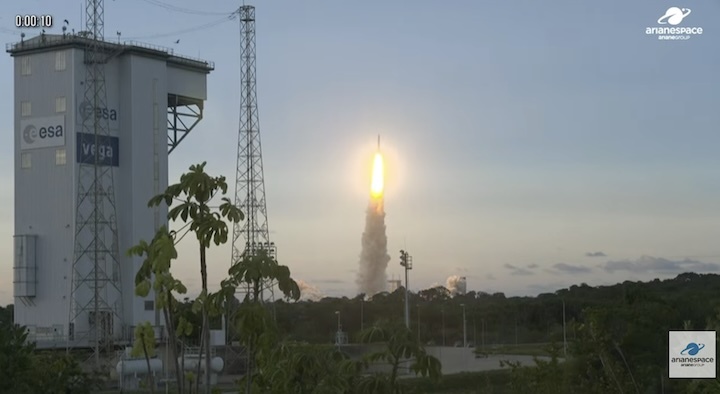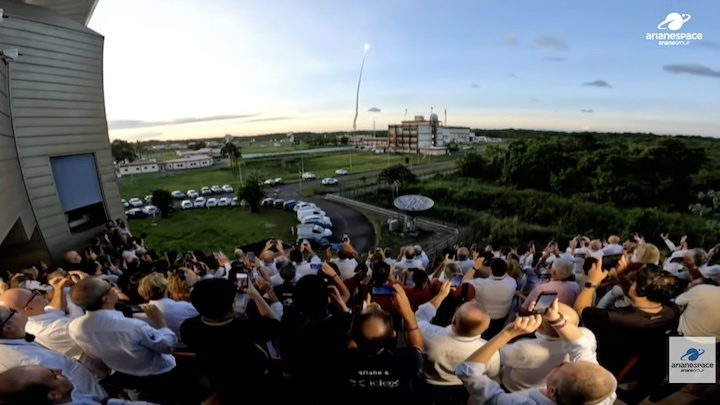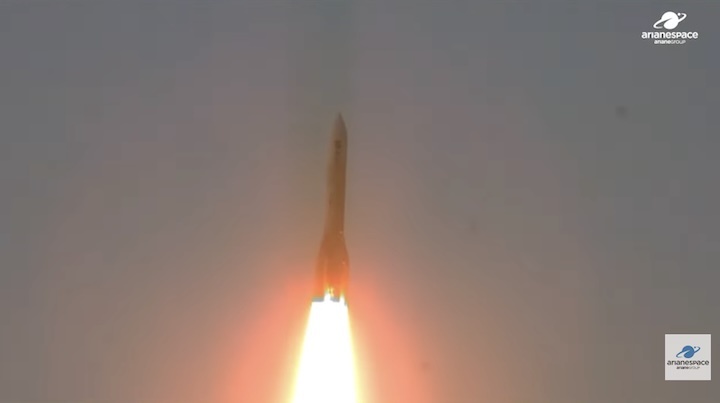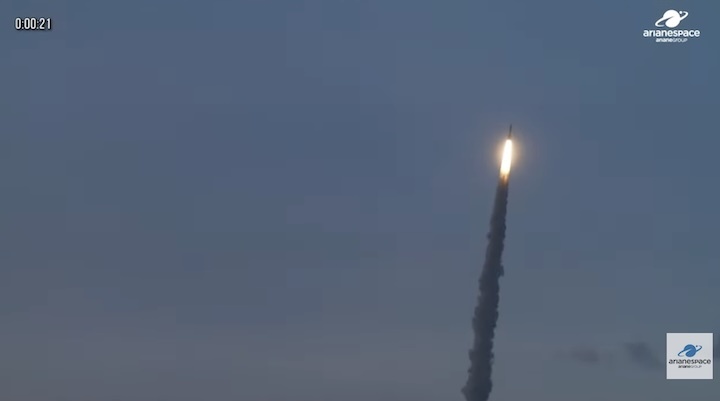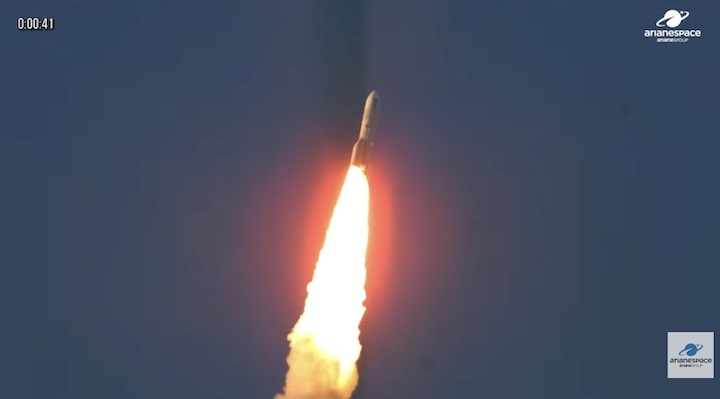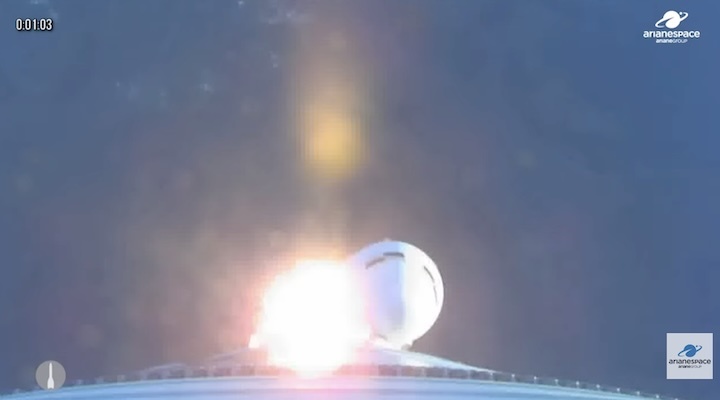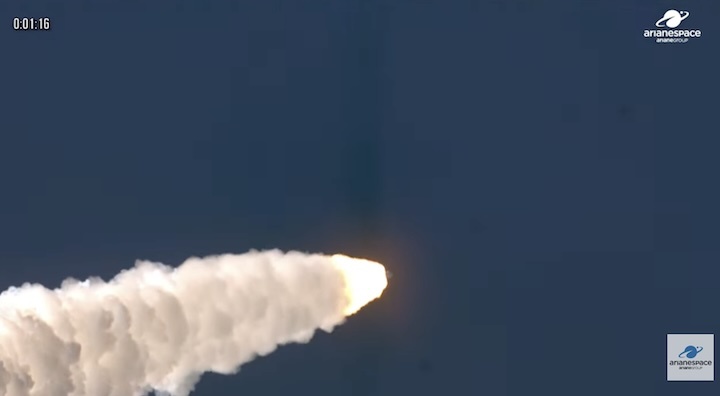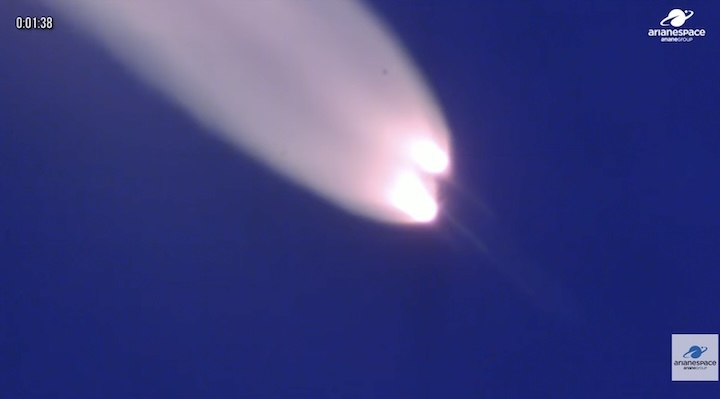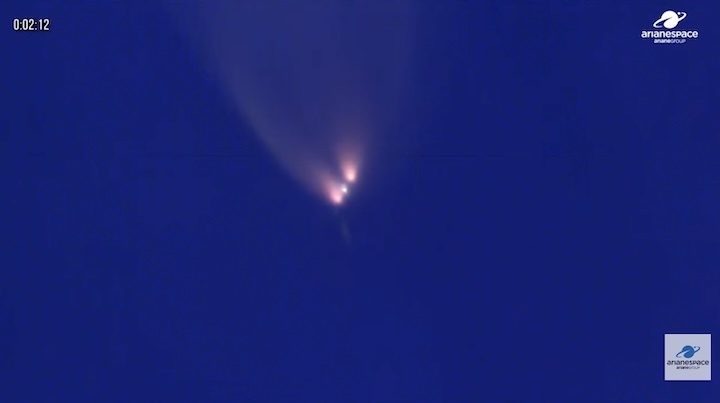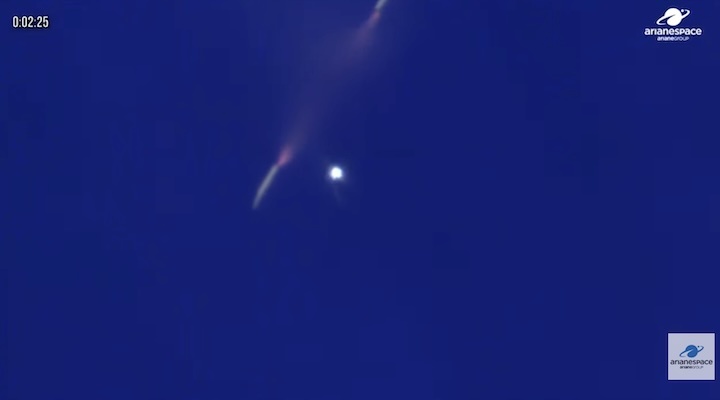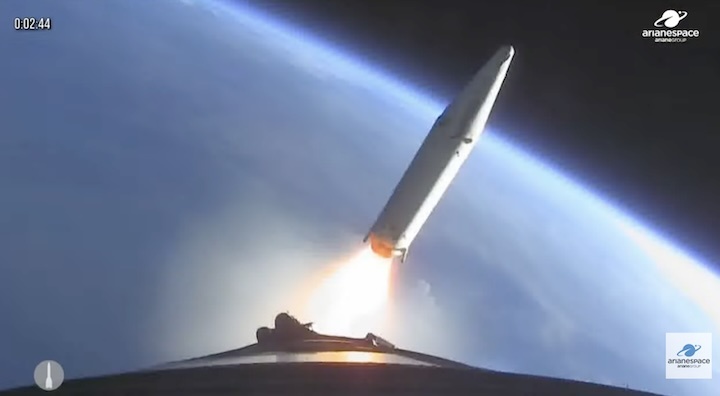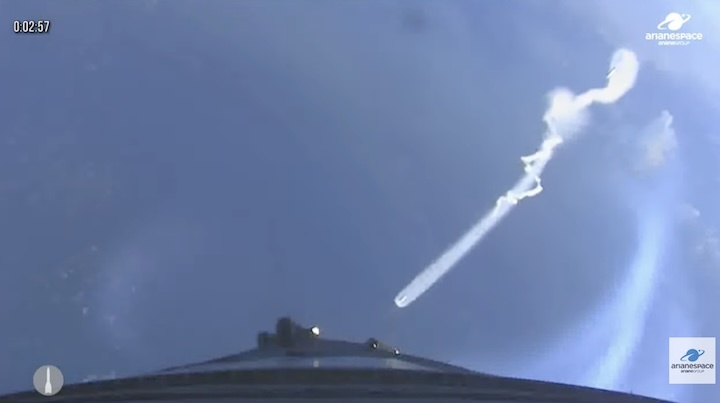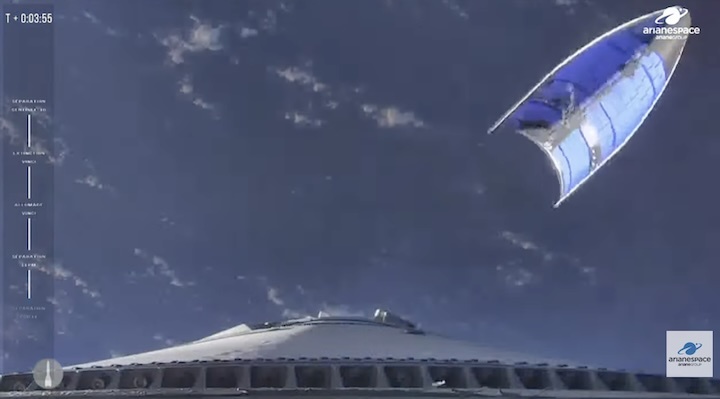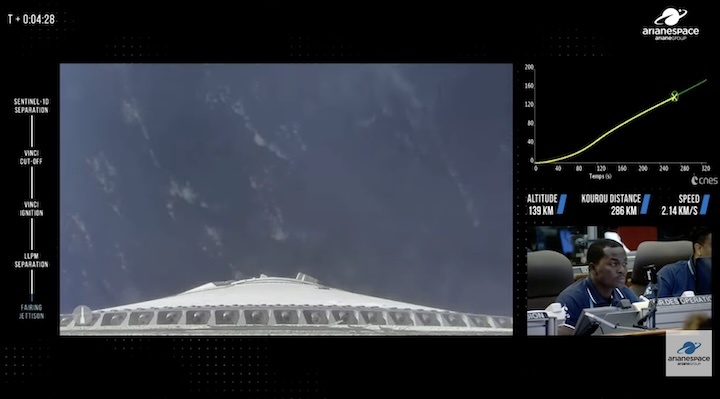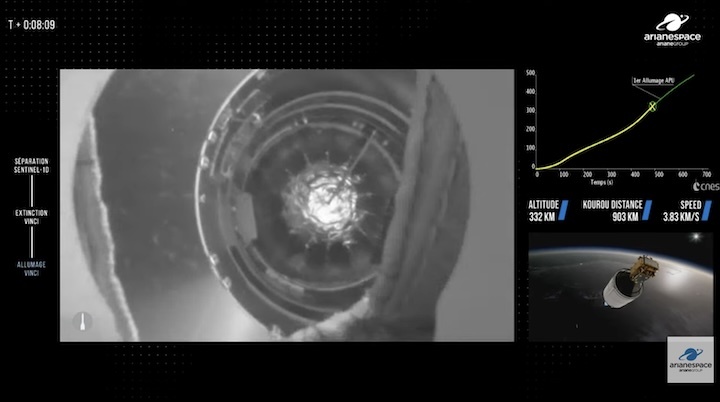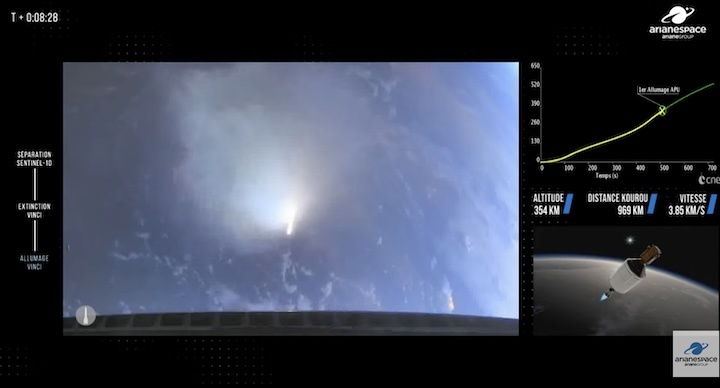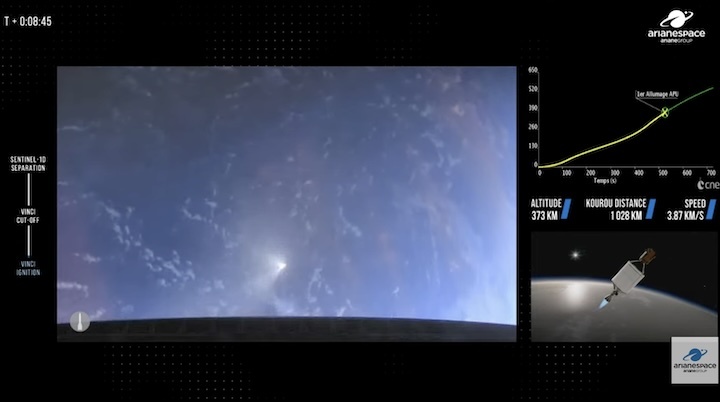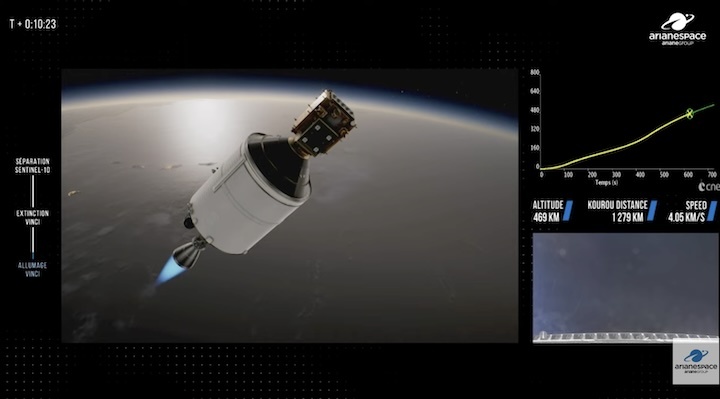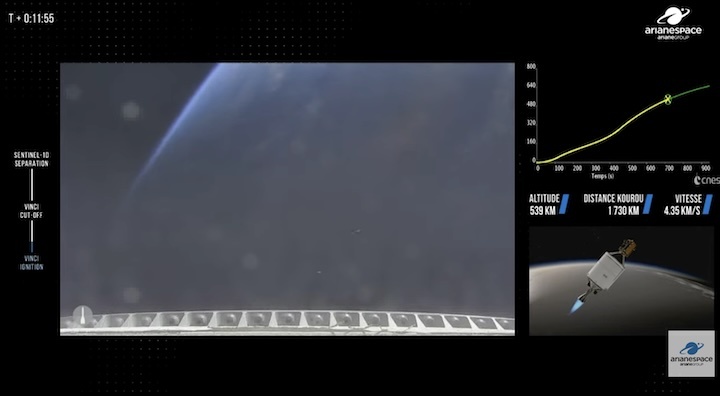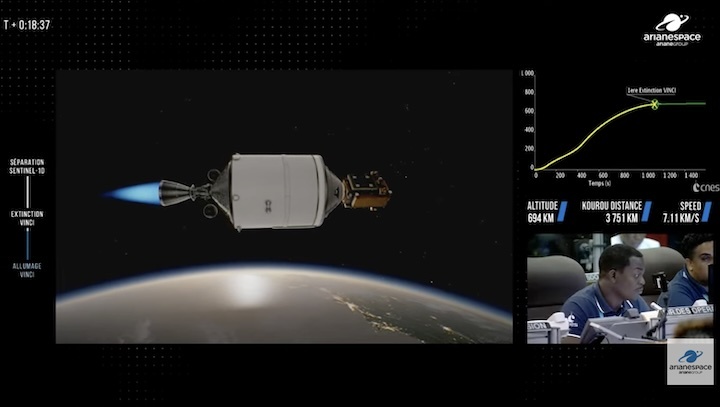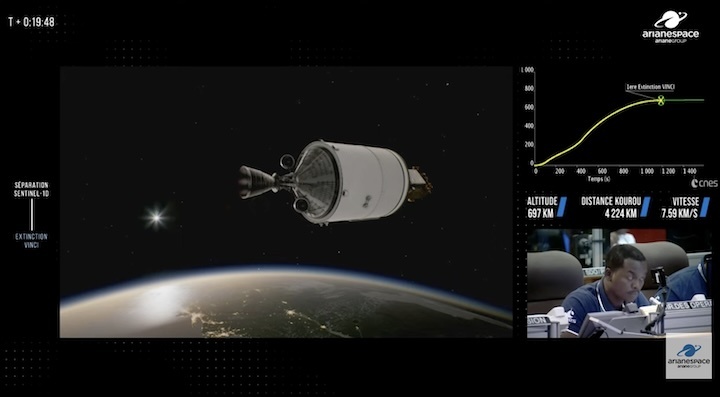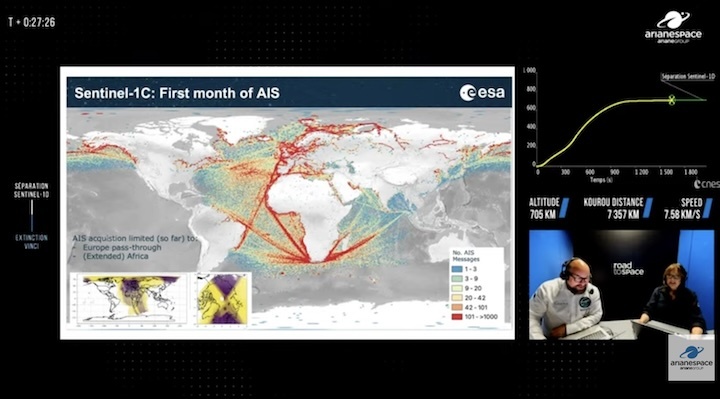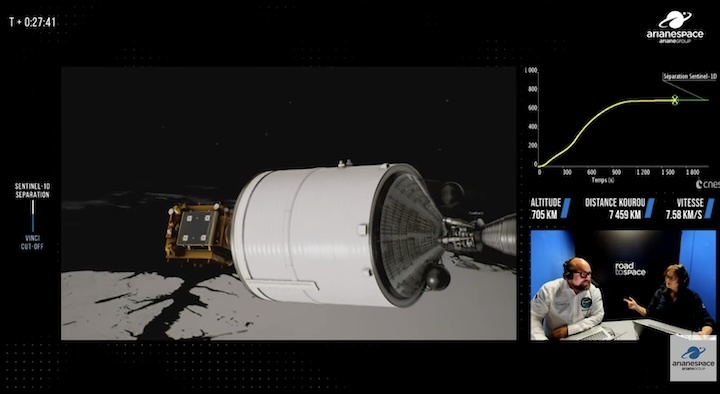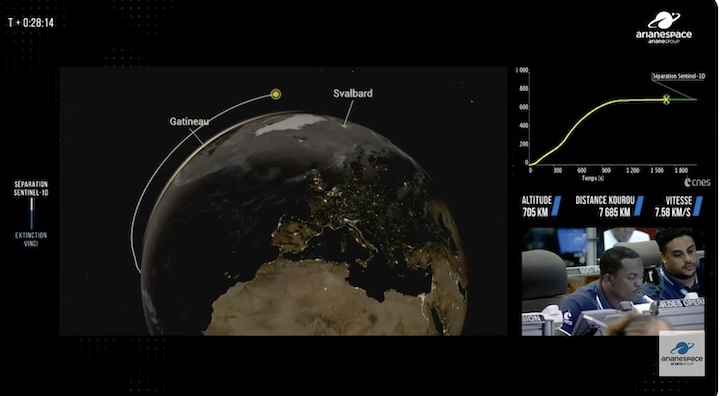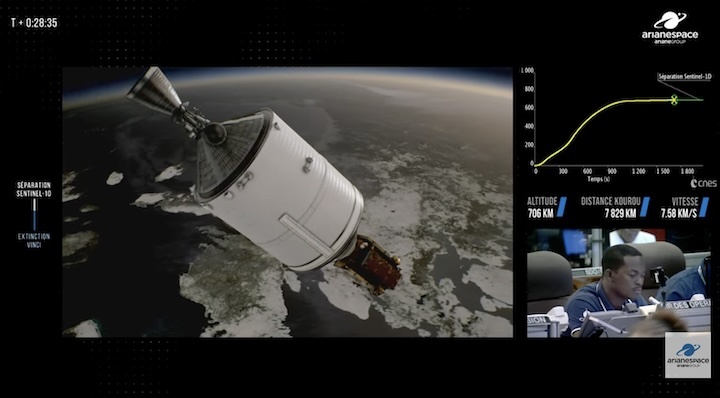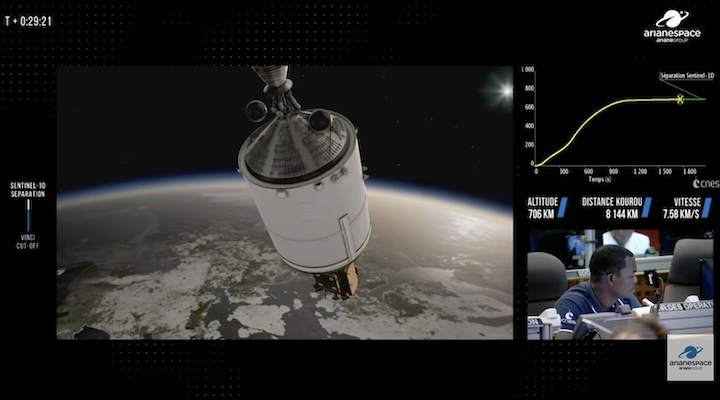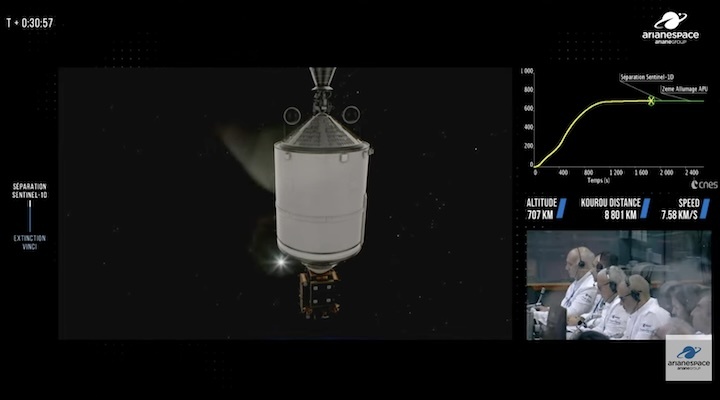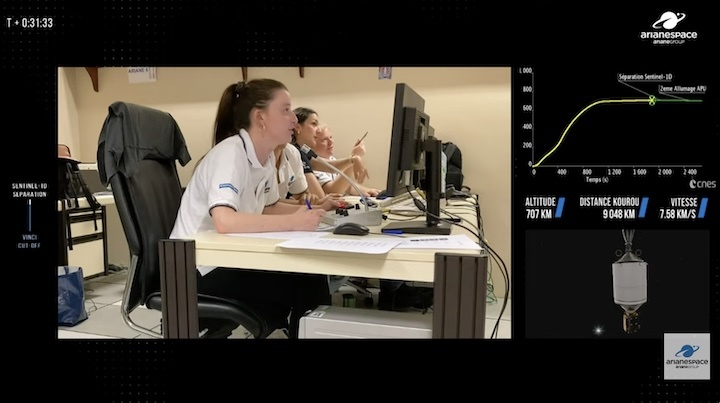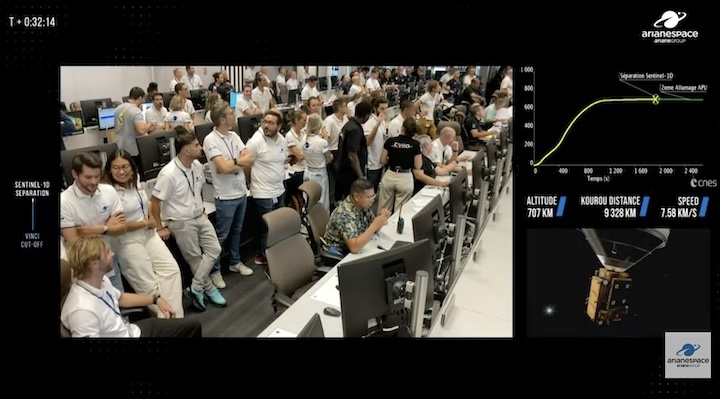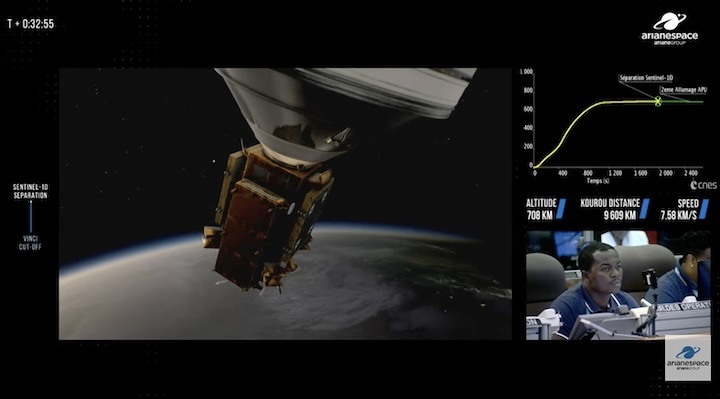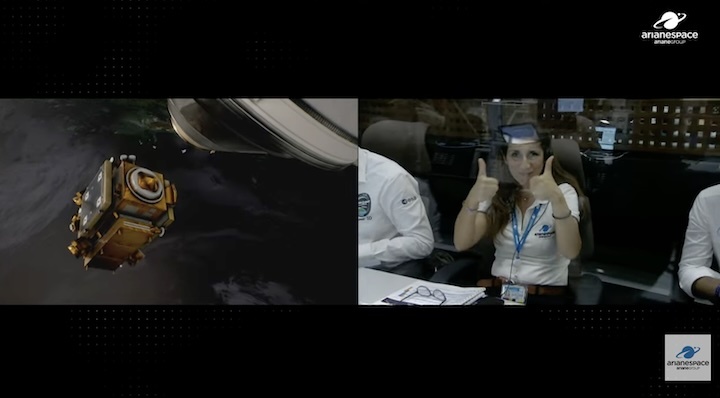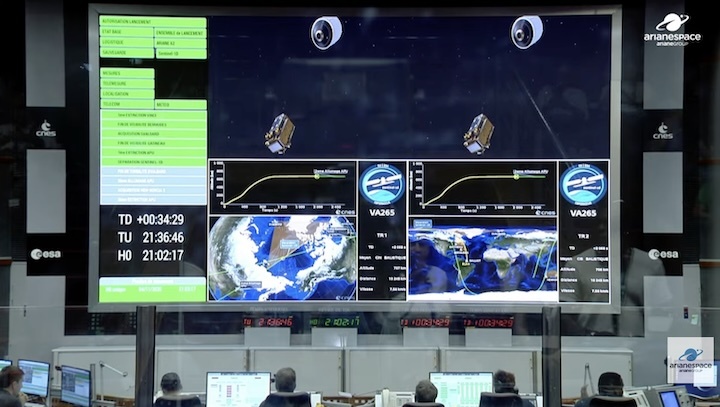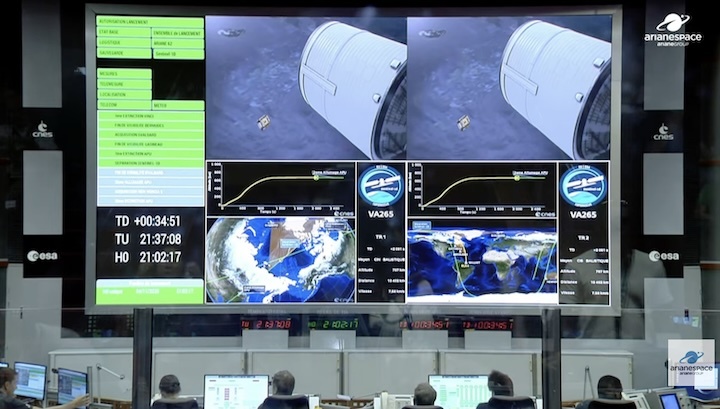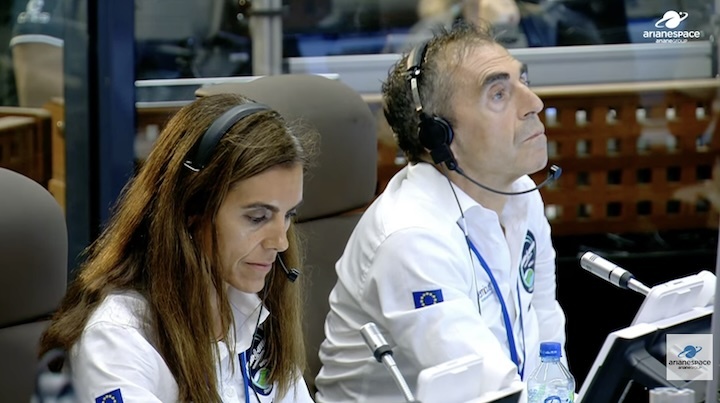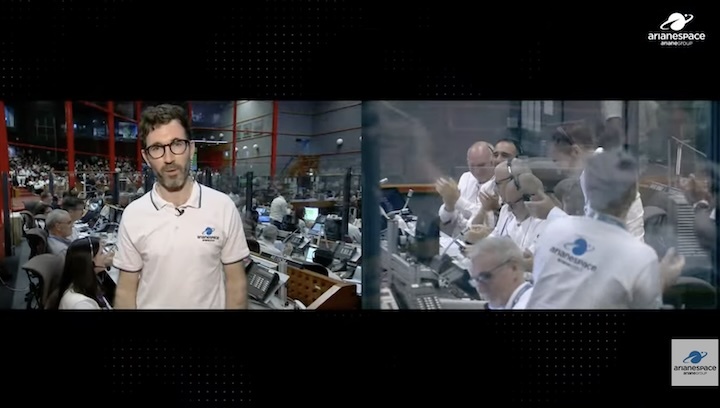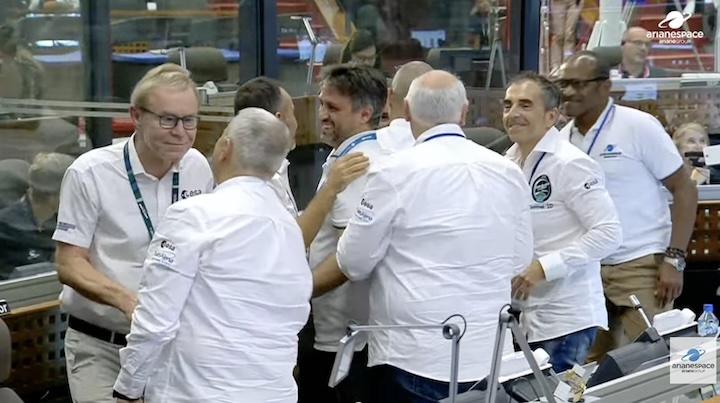14.09.2025
Sentinel-1D in French Guiana for launch campaign
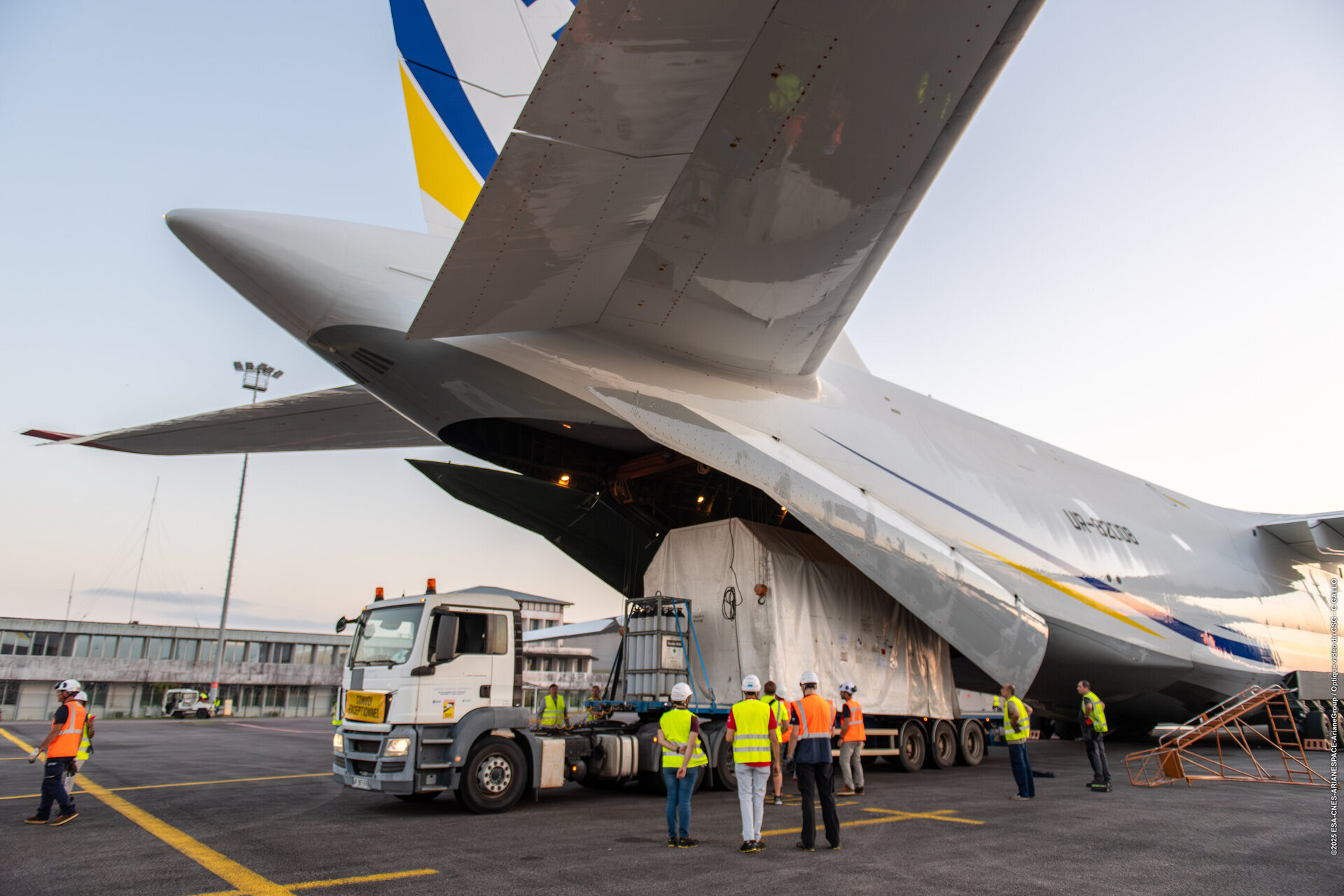
The fourth satellite for the Copernicus Sentinel-1 mission, Sentinel-1D, has arrived at Félix Eboué airport, the main airport in French Guiana. From there the spacecraft, safely stored in its protective casing, will be transported to launch preparation facilities at the European Spaceport in Kourou.
This is the start of a launch campaign that will lead up to the launch date, still to be announced. The satellite will reach its orbit on board an Ariane 6.
Meanwhile, the Sentinel-1 mission will continue to deliver a supply of radar images of Earth’s surface, performing in all weathers, day-and-night. It makes a key contribution to Europe’s Copernicus programme by supporting a broad range of applications that help manage our environment, understand and tackle the effects of climate change and safeguard everyday lives.

The Sentinel-1 mission has contributed data to scientific studies on a wide range of topics, including these recent examples:
- An analysis of flooding beneath the Greenland ice sheet
- Destructive fires in South America’s endangered forests
- Ground movement following a powerful earthquake
- Measuring one of the biggest ever methane releases related to human activity
Sentinel-1D will continue this work and will now undergo a series of launch preparation activities to ensure it is ready for liftoff.
Ramón Torres, Sentinel-1 Satellite Mission Director at ESA, commented, “This time we are launching the fourth Sentinel-1 satellite, and last of the first generation, on an Ariane 6, which will be an important moment for the whole of our space community. To see this mission, the first of the Copernicus programme family and a cornerstone of the Earth observation component of Europe’s space programme, be lifted into orbit on Europe’s newest heavy lift rocket, feels quite momentous. I would like to thank and congratulate all Sentinel-1 team members and our partners who have worked so diligently to make this milestone a huge success.”

Simonetta Cheli, Director of Earth Observation Programmes at ESA, added, “It is really a credit to the strong partnership between ESA and the European Commission that we are now preparing to launch another satellite for the Copernicus programme. Sentinel-1 has provided vital radar data that has been used in emergency responses, in scientific studies and in climate observation – a range of use-cases that highlights just how invaluable Copernicus is to our society.”
The Copernicus Sentinel-1 mission is based on a constellation of two identical satellites flying in the same orbit but 180° apart, to optimise global coverage and data delivery for Copernicus.
Sentinel-1A was the first satellite in the series, launched in April 2014, followed by the launch of Sentinel-1B in 2016. The Sentinel-1B mission came to an end in August 2022 after experiencing a technical fault that rendered it unable to acquire data. The satellite has been successfully de-orbited and will re-enter Earth’s atmosphere within 25 years. Sentinel-1C was launched in December 2024 to take over the role of Sentinel-1B.
Sentinel-1D will launch later this year.
Radar vision for Copernicus

Access the video
Sentinel-1D has a C-band synthetic aperture radar (SAR) instrument on board, which allows it to capture high-resolution imagery of Earth's surface. This powerful radar system operates in several modes, including wide swath and high-resolution, providing detailed data on land subsidence, ice movements and ocean conditions.
And like the Sentinel-1C satellite that was launched last year, Sentinel-1D will also carry an Automatic Identification System (AIS), which is a new instrument designed to augment the SAR payload data for maritime ship traffic monitoring applications.
Quelle: ESA
----
Update: 9.10.2025
.
Sentinel-1D preparations underway in Kourou
The Copernicus Sentinel-1 mission is about to get its fourth satellite. Copernicus Sentinel-1D has now undergone the checks and functional tests prior to its integration with Ariane 6, ready for launch on Tuesday, 4 November 2025.
When it joins its sibling Sentinel-1C, which was placed in orbit in December 2024, Sentinel-1D will significantly enhance the capabilities of the Copernicus Earth observation programme.
Why two satellites are better than one
The launch of Copernicus Sentinel-1D will provide a much-needed replacement to Sentinel-1A, which has been in orbit for 11 years now, well beyond its planned lifetime.
Sentinel-1C has been fully commissioned and currently operates with Sentinel-1A to deliver radar images of Earth’s surface, performing in all weathers, day-and-night. This service is vital for disaster response teams, environmental agencies, maritime authorities, climate scientists – and other users who depend on frequent updates of critical data.
Having two satellites in operation at any one time is essential for providing timely data and can mean a significant difference between a late warning and a critical early warning. The arrival of Sentinel-1D will enhance the Sentinel-1 mission’s performance in several ways:

- Better revisit time and coverage: With two satellites in the same orbit 180° apart, the revisit rate over any location on Earth improves. This means more frequent imaging, faster change detection, better monitoring.
- Enhanced features working in synergy: Both satellites have a C-band Synthetic Aperture Radar (SAR) instrument on board, which allows it to capture high-resolution imagery of Earth’s surface. They are also equipped with an Automatic Identification System (AIS) instrument to improve detection and tracking of ships. When both are operational, more frequent AIS observations are possible.
- Streamlined operations and cost savings: Because Sentinel-1C has just gone through commissioning, lessons learned can be applied to Sentinel-1D, reducing time and risk.
- GNSS compatibility: There are other improved onboard capabilities for Sentinel-1. For example, while Sentinel-1A and -1B were compatible only with the Global Positioning System (GPS), Sentinel-1C and -1D are compatible with the whole Global Navigation Satellite System (GNSS), including Galileo.
Testing confirms Sentinel-1D is ready

Functional checks have been performed on the spacecraft to confirm the spacecraft is in working order after being transported to Kourou.
These tests started with a pressurisation and leak check before the spacecraft was switched on. Afterwards several tests were performed to assess the spacecraft's health status and the correct functionality of all sub-systems. The AIS antenna assemblies, which were transported to the launch site in separate containers, have also been integrated onto the spacecraft and the final connectivity test to ensure their correct electrical connection concluded the spacecraft functional testing.
The spacecraft is now ready for the next steps, including spacecraft finalisation before fuelling.





